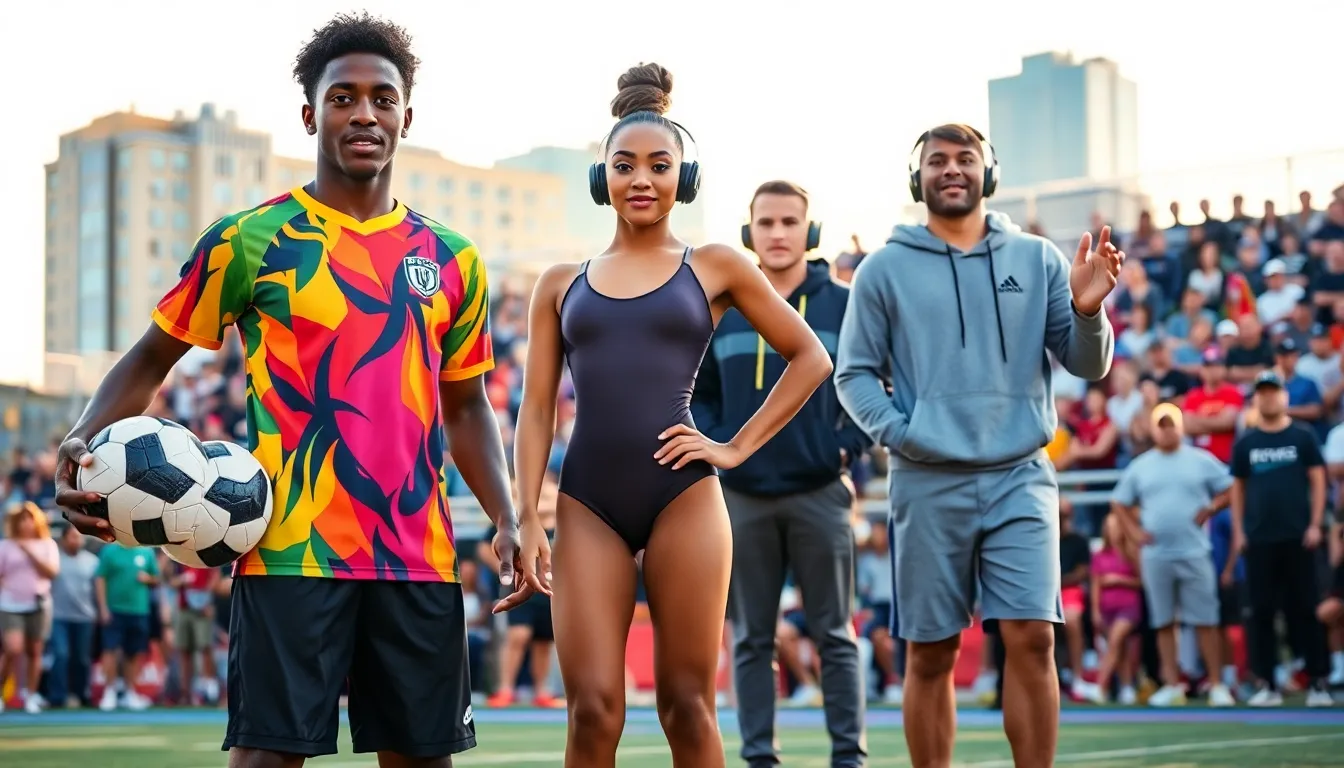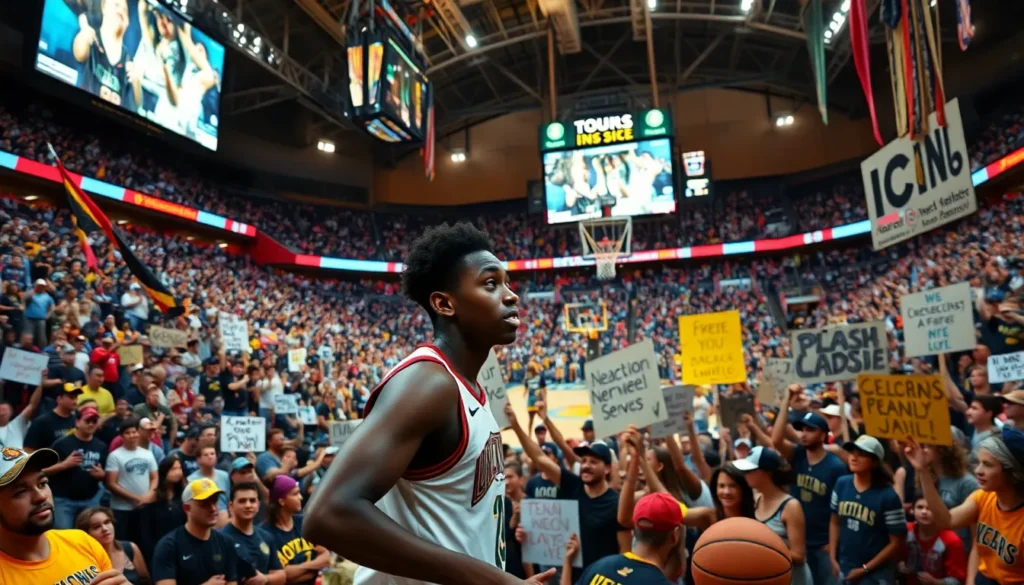Table of Contents
ToggleIn the ever-evolving world of sports, the connection between athletics and culture is becoming increasingly significant. This intersection is not just about what happens on the field or court: it encompasses societal influences, media narratives, and technological advancements that shape how sports are perceived and experienced. As fans, players, and communities embrace these changes, the realm of sports continues to transform in unexpected and exciting ways. This article delves into the latest findings at this intriguing nexus, exploring how various elements come together to redefine the sports landscape.
Understanding The Intersection of Sports And Culture

Sports have long served as a reflection of societal values, norms, and conflicts. This intersection of sports and culture is not only about entertainment: it is a microcosm of larger social dialogues.
Cultural identity often finds expression through sports, where athletes become symbols of hope, resilience, and change. The recent rise of alternative sports, such as esports, reveals shifting cultural preferences and demographics. Increasingly diverse audiences demand representation and authenticity in sports narratives, pushing organizations to adapt and innovate.
Notable examples include the impact of international sporting events like the FIFA World Cup and the Olympics that elevate cultural exchange and national pride, while also igniting discussions about social issues such as gender inequality and racial discrimination. In essence, the intersection of sports and culture not only entertains but also educates audiences on vital issues, making it a third space for dialogue and understanding.
The Role Of Media In Shaping Sports Narratives
Media plays an undeniable role in shaping sports narratives, often acting as the bridge between athletes and fans. Television, social media, and streaming platforms have transformed how sports stories are told and consumed.
With the advent of 24-hour sports news cycles and instant reporting, narratives are crafted in real-time, allowing audiences to engage with events as they unfold. This immediacy has both its advantages and drawbacks: while fans appreciate up-to-the-minute updates, sensationalism can sometimes overshadow the story’s integrity.
Media platforms also amplify the voices of athletes, giving them the power to share their perspectives on critical social issues. This has become particularly prominent in the age of social media, where athletes can directly communicate with their followers, circumventing traditional media barriers. Examples like LeBron James and Colin Kaepernick demonstrate the profound influence media has in shaping public perception and sparking significant conversations around race, inequality, and justice.
Athlete Activism: Voices That Change The Game
The rise of athlete activism marks a pivotal shift in how sports intersect with societal concerns. Athletes are increasingly using their platforms to advocate for social justice, climate change, and other pressing issues.
Historically, figures like Muhammad Ali and Jackie Robinson have used their influence to challenge the status quo. Today, contemporary athletes continue this legacy, often becoming the catalysts for change. Recent movements such as Black Lives Matter have seen athletes across different sports not only take a knee during the national anthem but also engage in grassroots organizing and philanthropy.
The support for these movements can lead to significant shifts in public sentiment and corporate endorsements, reflecting an evolving landscape where the voice of the athlete is not just crucial but fundamentally necessary. Organizations and brands are increasingly recognizing that supporting athlete activism aligns with their core values and helps foster loyal fan bases.
Technology’s Impact On Sports Experience
Technology is at the forefront of revolutionizing the sports landscape, enhancing the fan experience both on-site and remotely. From advanced analytics to augmented reality (AR), technology is redefining how fans engage with their favorite sports.
Innovations such as wearables provide athletes with data-driven insights into performance and recovery, while fans benefit from interactive viewership options that offer real-time stats and multiple camera angles during games. Platforms like YouTube and Twitch are taking sports broadcasting to new heights, allowing fans to consume content on their terms.
Virtual and augmented reality experiences are bridging gaps between fans and the game, creating immersive environments that bring them closer to the action. This fusion of technology and sports is not just enhancing engagement: it’s also democratizing access to information and experiences that were once reserved for a select few.
Fan Engagement And Community Building
As the landscape of sports continues to evolve, fan engagement has emerged as a critical component of sports culture. Teams and organizations are now focused on creating community-centered experiences that foster loyalty and connection.
The use of social media platforms enables fans to engage with teams beyond just spectating: they can participate in discussions, share content, and express opinions in real-time. This interactivity helps cultivate a sense of belonging and community among fans.
Also, initiatives like fan clubs, watch parties, and local outreach programs enhance these community ties. Participatory events allow fans to step into the spotlight, transforming them from mere spectators to active participants in their team’s journey. This shift not only strengthens brand loyalty but also builds a more cohesive fan community.
The Future Of Sports At The Intersection
Looking ahead, the future of sports at the intersection of these cultural, technological, and social dynamics appears promising yet complex. As fan bases diversify and expectations evolve, the sports industry will need to adapt continuously.
The influence of Generation Z and millennials, who demand inclusivity, accountability, and authenticity, is already reshaping how sports brands approach marketing and outreach. Besides, advancements in technology will continue to revolutionize both the fan experience and athlete performance, suggesting that sports will become even more interactive and engaging.
Also, as social issues remain prominent in society, athlete activism will likely continue to expand, pushing organizations to embrace these narratives and drive change from within. The intersection of sports, culture, and technology will not only define how sports are played and consumed but also how they foster unity and inspire future generations.
Conclusion
To conclude, the intersection of sports and culture represents a dynamic and influential space that reflects broader societal trends. From media narratives shaping public perception to athlete activism sparking powerful conversations, the evolution of sports is an illustration of collective progress. Technology further enhances this experience by fostering deeper connections between fans and athletes.
As the landscape continues to change, embracing these developments will prepare fans, athletes, and organizations for the future of sports. By recognizing the cultural significance of sports, stakeholders can engage more meaningfully in the ongoing dialogue that transcends the playing field.





